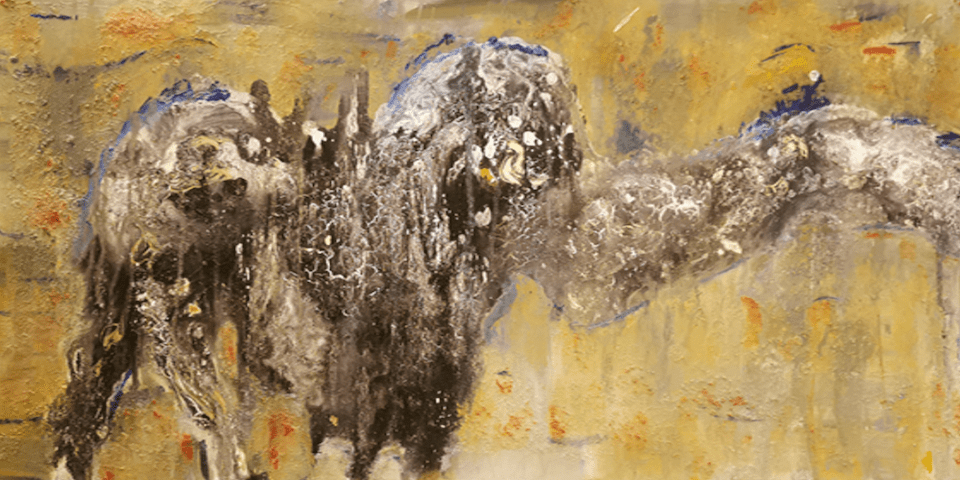A Curious Spirit
Art and science are often viewed in opposition. Yet creative minds have always been responsible for technical innovations the world over: from Leonardo da Vinci’s Renaissance anatomical studies to Olafur Eliasson’s climate activism. Kendra Troschel also believes in these similarities: she worked as a microbiologist for many years and is now a practising painter. “It might seem a little far from art,” she notes, “But I think there is an innate curiosity shared between the two fields.” Troschel describes herself as a “magpie”: picking, adapting and combining various visual tropes from art history.
It’s this spirit of inquisitiveness which drives her practice. “I try to absorb a lot, so I’ll flick through images, movies, poems until I find one particular thing that interests me – a motion or a position of a figure. I’ll think about it and what it means to me: the feeling or essence of it. The rest of the painting is done subconsciously, adding colours and objects that feel right and trying not to overthink anything.”
It’s an approach similar to surrealist ‘automatism’ – writing and drawing methods which come from the subconscious mind. André Breton and other members of the movement produced the earliest examples during the 20th century, aiming to write as rapidly as possible without intervening consciously. “I like to step towards the surreal,” Troschel explains. “I try to capture the aspect of dreams in my work; I want the audience to feel… to know that there is more to this world and life than just what is on the surface.”
Words drive much of Troschel’s work, with inspiration coming from the likes of Jane Austen, Virginia Woolf and Oscar Wilde, as well as contemporary names Sarah J Maas and Leigh Bardugo. She is particularly inspired by fantasy tales with strong female characters. “In ninth grade we were deciphering Shakespeare and we came across Sonnet 18 (“Shall I compare thee to a summer’s day?”),” she recollects. “The last two lines profoundly changed my view on art: ‘So long as men can breathe or eyes can see, So long lives this, and this gives life to thee.’ Ever since then, I have thought about how art can be interpreted or remembered.”

It’s important to Troschel that viewers consider what belies an image – rather than taking it at face value. She compares this to some attitudes towards Abstract Expressionism and Pop Art, as well as today’s internet culture. “It’s not too dissimilar to memes: at first they appear crude and low-effort, but on further inspection, they can be strangely poignant. They capture some corner of humanity behind something that is funny on the surface.”
What’s next for the artist? “I have a few exhibitions in the next two years including China, USA, Germany and the UK. And I am always working on new paintings. Right now, I’m exploring the simple moments of everyday life – but reimagining them to be more meaningful than what they first appear. I’m also looking into sculpture.”
Image Credits:
1. Kendra Troschel, Anxiety, 60 x80cm acrylic and oil on canvas.
2. Kendra Troschel, Consciousness of water, 50 x 100 cm Acrylic paint on canvas.
3. Kendra Troschel, Reach (detail), 59.4 x 84.1 cm mixed media on wood board.
4. Kendra Troschel, Song of truth, 50 x 100cm Acrylic paint on canvas.
The post A Curious Spirit appeared first on Aesthetica Magazine.
from Art Life Culture https://ift.tt/3nxYRk1
via IFTTT



Comments
Post a Comment